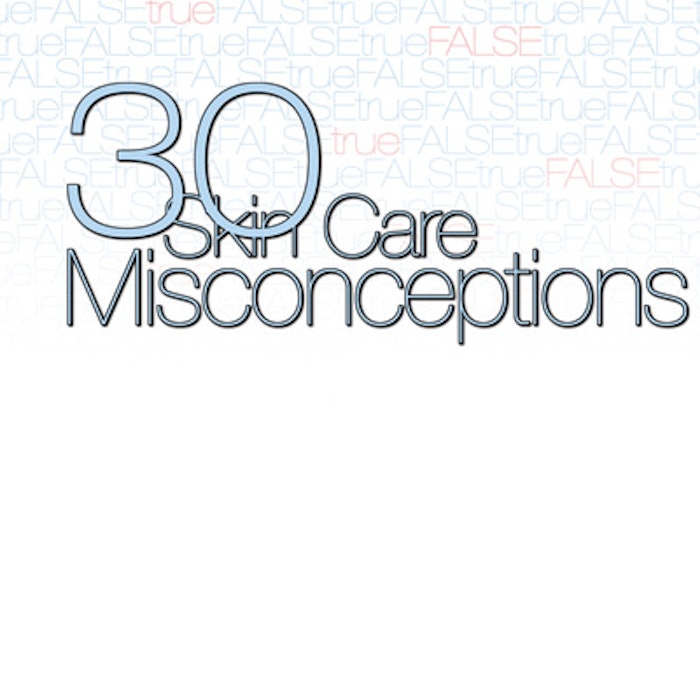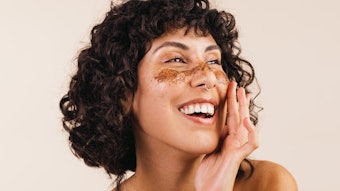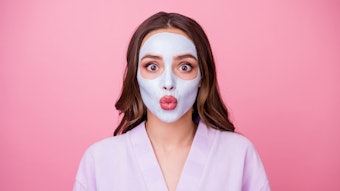
Skin care professionals and consumers alike are bombarded daily with a myriad of information about skin care, skin science and skin health from the media, manufacturers and an ever-increasing number of physicians, all attempting to justify that what they profess and advocate is the truth and nothing but the truth. Sometimes claims are accurate and sometimes they aren’t. More often than not, the truth may lie somewhere in between.
Everyone from late-night television host David Letterman to mass-market publications proudly announce their top 10 lists. Well, this is no different except that it focuses on 30 skin care myths. The following list offers up a variety of skin care facts—not in priority order—that may well call into question some common beliefs and long-held traditions. See how many you agree with as you review the list.
This list is not meant to be all-inclusive, but hopefully it will inspire thinking about what is real and how you know it is real and also inspire you to question those making a variety of claims about products, ingredients and the science behind them. Your role as a skin care professional has a large educational component that mandates remaining current in the field, as well as providing education on skin health to clients and patients. Sharing these myths with clients will help to strengthen your credibility as a skin care expert. Remember, you are not selling hope in a jar, but rather providing realistic and truthful solutions to help deal with extrinsic and intrinsic aging.
- Facial exercises tone facial muscles and make a person appear younger.
The face is the only part of the body where muscles are attached directly to the skin; there are no facial ligaments and tissue. Constant facial exercise and tugging contribute to additional lines. Actually, wrinkles often form along expression lines caused by facial movements.
- Vitamin E minimizes scarring.
Vitamin E is an antioxidant and helps build skin, but there is no evidence that it does anything to help with scarring. There is even some research that suggests it may have a negative effect on scarring.1
- Cucumbers help reduce puffiness around the eyes.
The principle ingredient in cucumbers is 90% water with the balance being inert fiber. They can be soothing and, with moisture, hydrate skin temporarily. The same results can be obtained from a cold compress.
- Skin pores open and close.
Pores are openings in the skin that allow oils (sebum) to reach the surface. If pores are larger, this can be due to dead cells, genetics or scarring from squeezing blemishes.
- The higher the skin protection factor (SPF) rating, the better.
SPF ratings, soon to be revised by the U.S. Food and Drug Administration (FDA), only refer to protection from UVB rays. A person needs sun protection that has chemical and physical blockers, plus antioxidants. A higher SPF also gives a false sense of security and introduces more potentially harmful chemicals to the body. Plus, an SPF of 50 is only marginally more protective than an SPF of 15; an SPF of 30 has only 2% more protection than an SPF of 15, and a 40 has only 1% more than a 30. Sunscreens need to be reapplied every 90–120 minutes.
- Layering several products with SPF ratings increases protection.
You are only protected to the extent of the higher rating of one product. A foundation with an SPF of 10, moisturizer with an SPF of 15 and a sunscreen with an SPF of 20 does not yield an SPF rating of 45.
- Topical creams containing collagen can replace collagen.
There is a lack of impartial, empirical evidence that the topical application of collagen or elastin can penetrate the dermis, even when using nanotechnology. They can provide moisturization to the epidermis, but only injections are conclusively effective.
- Mineral oil is bad for your skin.
Today’s cosmeceutical mineral oil is a far cry from the industrial type that was previously used on skin. It is a very effective ingredient in helping remove excess oil from the skin. Oil attracts oil, and the modern mineral oil formulated for use in skin care has a different molecular weight and will not harm skin or clog pores. Mixed with kaolin—fine clay—it makes a potent cocktail to assist in controlling oil production in problematic skin. Vitamin A is the best ingredient to normalize skin.
- Mineral oil is comedogenic.
Cosmeceutical-grade mineral oil is not comedogenic. The myth is that industrial-grade mineral oil and lubricants are the same as those used in cosmetic ingredients. So-called medicinal white mineral oil has met with stringent safety standards. To remove sebum plugs in the follicles, an oil-based substance is needed. Water-based products cannot melt or remove sebum plugs.
- Preservatives in skin care products are bad.
Preservatives help prevent the growth of bacteria, fungi and other organisms that can not only deteriorate a product’s effectiveness and spoil the product itself, but also allow harmful bacteria to get on or in the skin. Although there is concern about the use of parabens, the research is not definitive that topical application leads to harmful accumulations. Parabens are found throughout nature; for example, many fruits and vegetables, such as strawberries, are naturally full of parabens. But further study is needed.
- Packaging is not important.
Packaging in skin care is vitally important—not for aesthetic reasons—but to protect the efficacy of the ingredients. Wide-mouth jars, transparent containers and pumps that are not airless all pose problems in keeping ingredients safe and potent.
- Chocolate and greasy foods cause acne.
Eating chocolate does not cause acne. Hormonal factors, bacteria and skin cells are at the root of problematic skin, and stress can exacerbate flareups. Some individuals may have allergic reactions to foods that can cause inflammation, as well.
- Natural and organic products are always better.
Buyer, beware! Many natural and organic products are not as they claim. Plus, many times, active ingredients have to be synthesized to be bioavailable and efficacious. Synthetic compounds can actually be identical to those found in nature and be more effective. Natural vs. laboratory-processed should not lead to an up or down decision about whether a product is good or bad. Not all chemicals are bad, and not all natural or organic ingredients are good.
- Using larger quantities of a product will yield better results.
Less is more. Normally, a pea-sized amount of facial product will do the trick. Excessive amounts can cause skin problems and waste money.
- Blackheads are a caused by improperly cleansed skin.
Blackheads or comedones are caused by clogged pores, and excessive scrubbing can irritate and further inflame skin. Blackheads often contain dirt, oil, and dry and dead skin cells that need to be removed. Products that help dissolve sebum are the most effective.
- Drying problematic or oily skin clears up acne.
The opposite is true. When skin becomes overly dry, an environment is created in which the skin is signaled that is too dry and produces more oil. Use drying products sparingly, and look to lightly moisture oily skin. The goal is to keep skin balanced.
- Get a base tan to prevent burning before going on vacation.
Any tan is a scar, and there is no such thing as a healthy, safe tan. Self-tanners are the safest way to obtain tanned skin.
- All sun damage to skin occurs before 18 years of age.
Sun damage continues to occur throughout life, although recent information suggests less than 50% of sun damage happens before a person is 18.2 It is never too late to protect your skin.
- Indoor tanning is safe.
The argument that tanning beds and booths do not cause skin mutations that may cause cancerous lesions to develop is patently false. UVA rays found in indoor tanning lead to deeper, more harmful skin damage. You do not have to have a sunburn to create damage to skin cells.
- Antioxidants reverse wrinkles.
Antioxidants are essential in fighting free radical formation and are important in helping prevent skin damage, but they cannot make wrinkles go away.
- Skin damage and signs of aging can be cleared up quickly.
If a product sounds too good to be true, you can bet its claims are false. The damage did not happen overnight, and it cannot be magically repaired. Expect at least three skin cycles—a cycle can be between 21–40 days, depending on age—to begin to see measurable results.
- All alcohol in skin products is bad.
Some compounds that contain alcohol can act as emollients, which can decrease the skin’s water loss. Cetyl, benzyl and oleyl alcohol are examples of good alcohols. It is important to know what comes before the OH in chemical compounds.
- Sun exposure will improve acne.
Yes, sun exposure can hide the appearance of acne for awhile, but will lead to skin damage, pigmentation and drying that signals the skin to produce more oil.
- Alcohol abuse can cause your nose to become red and bulbous.
The intake of alcohol can temporarily dilate blood vessels and make skin appear flushed, but in most cases, a large, inflamed, red and bulbous nose is a result of rosacea.
- Skin repair only happens at night.
A good night’s sleep is certainly helpful to skin health; however, skin repair is ongoing. Inadequate sleep can cause stress, skin puffiness and can slow the natural development of collagen.
- Skin care products can last three or more years.
Despite a number of claims to the contrary, most skin care products lose a great deal of their potency within 12 months. It is best to use the entire contents within one year because preservatives do not last forever and ingredients can get contaminated with bacteria, or they can evaporate.
- Strong scrubs, soaps and abrasives are good for your skin.
Be careful how you wash your face. Too much scrubbing or too many abrasive products can remove protective oils, create tiny micro tears and contribute to aging, irritated skin. Less is more, and a gentle cleanser and light moisturizer work well for most people.
- Vitamin A thins the skin.
Actually, the reverse is true. Skin can become thin due to the lack of vitamin A because it helps to create new, healthy and normal skin cells. Vitamin A is arguably the most important skin care ingredient, bar none. It is one of the few—if not the only—ingredient that is backed by more than 50 years of objective, scientific research supporting its efficacy.
- The only form of vitamin C that works is L-ascorbic acid.
L-ascorbic acid only remains in its most potent state for a limited time. A new era in vitamin C formulations, one of the best antioxidants for your skin, has arrived. There are several forms that have been developed that are not water-based, which means they can better penetrate the skin and remain more potent for longer periods of time.
- There is one antioxidant ingredient that is the best.
Every year, there is a hot, newly discovered antioxidant that is touted as the best, but this is not true. A cocktail of antioxidants provides better results than just one. Seek products containing a plethora of antioxidants.
References
1. LS Baumann and J Spencer, The effects of topical vitamin E on the cosmetic appearance of scars, Dermatol Surg, 25(4), 311–5 (Apr 1999)
2. WF Berfeld, A lifetime of healthy skin: implications for women, Int J Fertil Womens Med, 44(2), 83–95 (Mar/Apr 1999)










